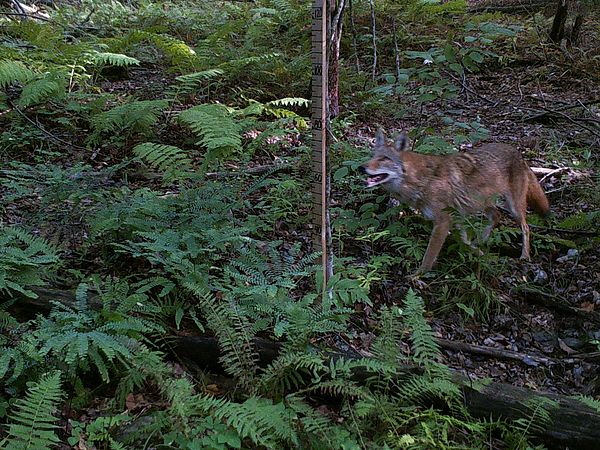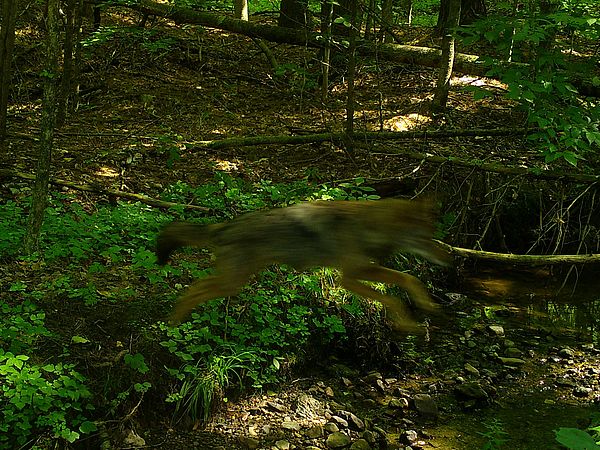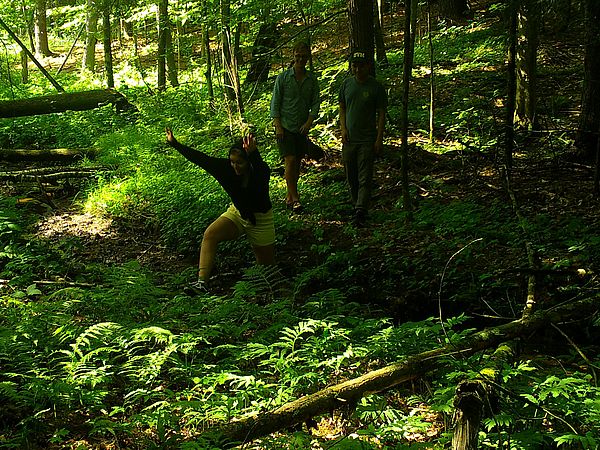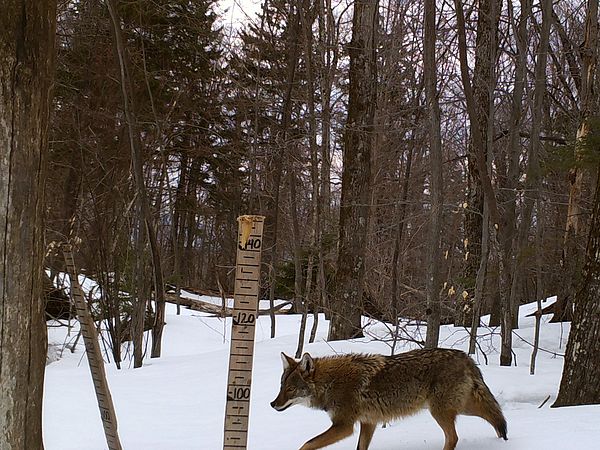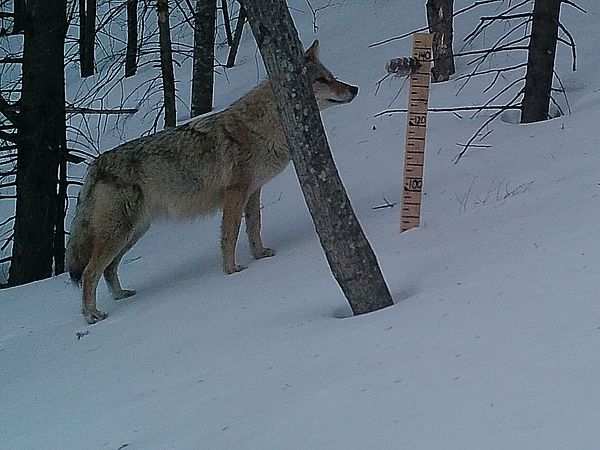Understanding the ecological and cultural niche that Vermont’s Eastern Coyotes occupy requires an unorthodox approach. This should come as no surprise, since Eastern Coyotes (Canis latrans var) are a fairly unorthodox species. Eastern Coyotes combine the inquisitive and adaptable nature of true Coyotes (Canis latrans) with a hint of the larger size and sophisticated social behaviors inherited from Great Lakes Wolves (Canis lycaon). From their arrival in the northeast around 1940 through the present, these distinctive canids have captured the public imagination.
For Eastern Coyotes, this attention is a mixed blessing. Vermonters variously love and loathe the species, a dynamic which has sparked recent regulatory and legislative clashes. In much the same way that Eastern Coyotes occupy diverse ecological niches—from pack hunting top predators in the northern forests to opportunistic scavengers in some of the east coast’s largest cities—the species plays a range of parts in Vermont’s social landscape.
The variety of human attitudes about Eastern Coyotes presents a challenge for wildlife managers. When public passions around wildlife run high, conservation biology may not be enough to inform decisions that will meet all stakeholders’ needs. To navigate this challenge, managers and other interest groups are turning to new kinds of research for perspective. As a graduate student with the University of Vermont, I am partnering with Cold Hollow to Canada to help investigate the diverse values that underlie Vermonters’ experiences of Eastern Coyotes.
My research is rooted in conservation biology, but draws on social science approaches to draw out the issues around Eastern Coyotes that Vermonters care most strongly about. I have set out to collect “coyote stories” from around the state, with the rational that people often rely on stories to communicate their experiences and priorities. With a large enough body of stories, I hope to identify trends in the kinds of values that Eastern Coyotes impact—whether by enriching them, or detracting from them.
While gathering stories is an accepted social science complement to traditional natural history work, I believe that understanding Vermont’s coyotes calls for even more hybridization. “If you don’t have the stories,” writes novelist and poet Leslie Marmon Silko, “you don’t have anything.” Mindful that Vermonters’ coyote stories are valuable, I hope to build a research program that returns something more concrete than an academic paper to the communities where I work.
This interest in community engagement matches well with a core Cold Hollow to Canada approach: citizen science. To complete my hybrid strategy, I aim to partner with public high schools across Vermont and train students to gather coyote stories as citizen scientists. By giving students an opportunity to learn social science research skills in a natural science context, I hope to produce useful knowledge for wildlife managers while also creating a valuable educational experience for Vermont students.
In my outreach to area schools, I plan to draw one other Cold Hollow to Canada staple. Rather than using professionally produced wildlife photography to illustrate coyote ecology in the Green Mountain state, I plan to pepper my presentations with images of Eastern Coyotes captured on local wildlife cameras. In a truly collaborative spirit, Cold Hollow to Canada Woodlots members have already contributed several stunning captures to the effort.
If you are interested in learning more about Josh’s research, have a coyote story you would like to share, or would be interested in placing a wildlife camera on your land, Josh can be reached at joshua.morse@uvm.edu. Josh’s research is supported by Cold Hollow to Canada in addition to National Geographic Society, Vermont Trappers Association, and the University of Vermont Jeffords Program on Policy Studies.
